- Details
- Hits: 623
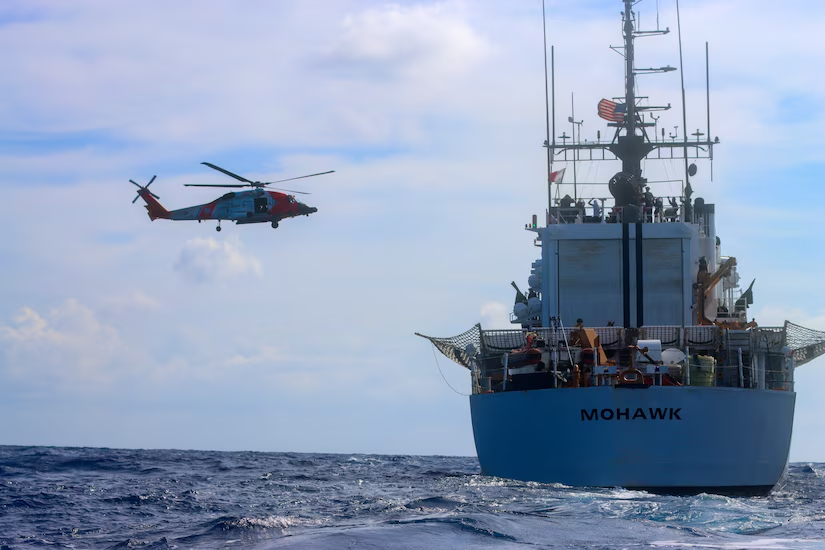
September 4, 2025: The crew of the Coast Guard cutter Mohawk returned to their home port in Key West, Florida, Aug. 29, following a 75-day maritime border security patrol in the Windward Passage, Straits of Florida and Caribbean Sea.
Read more: COAST GUARD CUTTER MOHAWK RETURNS HOME AFTER 75-DAY MARITIME BORDER SECURITY PATROL
- Details
- Hits: 165
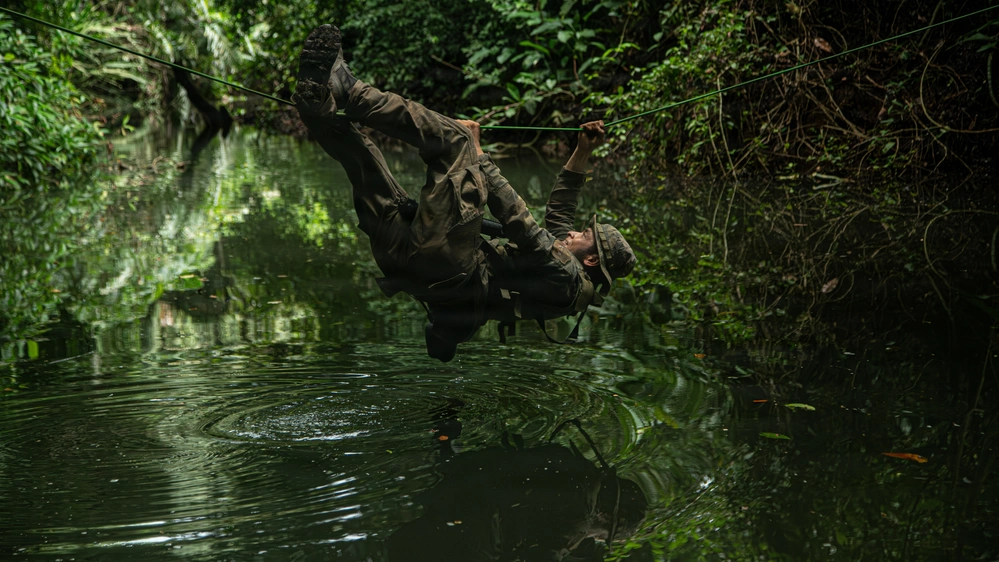
PANAMA, (October 27, 2025): A member of the Policia Nacional de Panamá, crosses a rope bridge during the Combined Jungle Operations Training Course at Base Aeronaval Cristóbal Colón, Panamá. U.S. Southern Command and its interagency partners are expanding their ongoing strategic security partnership with the Panamanian security forces as an enduring promise to promote partnership, solidarity, and open communication, which enables opportunities of working together effectively to address common challenges and collective security. (U.S. Army photo by Spc. Trey Woodard)
- Details
- Hits: 164
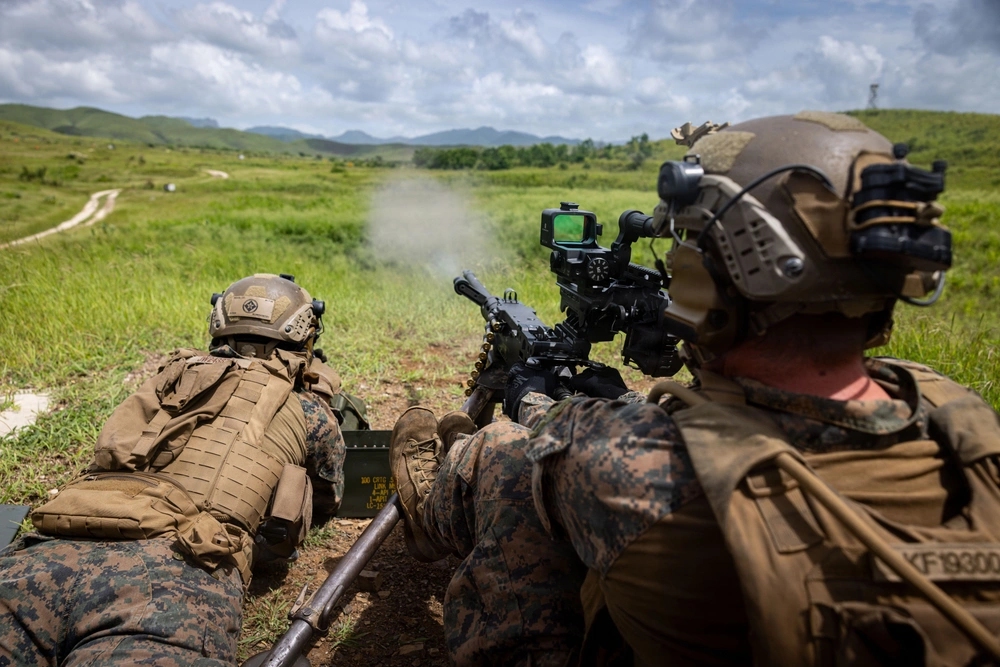
PUERTO RICO, (October 22, 2025): U.S. Marine Corps Lance Cpl. Kevin Fine, right, a machine gunner with Weapons Company, Battalion Landing Team 3/6, 22nd Marine Expeditionary Unit (Special Operations Capable), engages a target with an M2A1 .50-caliber machine gun during a live-fire range on Camp Santiago, Puerto Rico. U.S. military forces are deployed to the Caribbean in support of the U.S. Southern Command mission, Department of War-directed operations, and the president’s priorities to disrupt illicit drug trafficking and protect the homeland. (U.S. Marine Corps photo by Sgt. Nathan Mitchell)
- Details
- Hits: 669
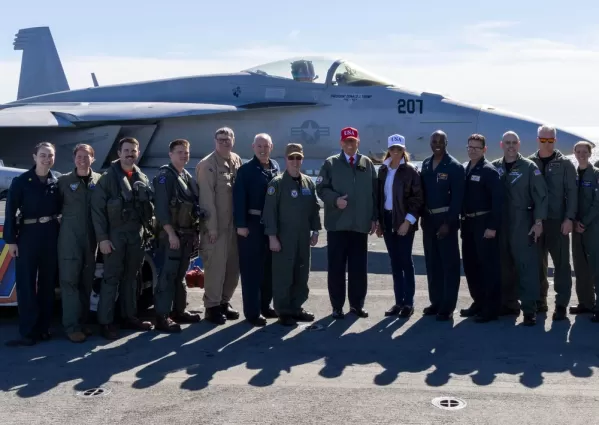
UNITED STATES, ATLANTIC OCEAN (October 5, 2025):Commander, U.S. 2nd Fleet. President Donald J. Trump and First Lady Melania Trump pose for a photo aboard the Nimitz-class aircraft carrier USS George H.W. Bush (CVN 77) after the Titans of the Sea Presidential Review. The Titans of the Sea Presidential Review is one of many events taking place throughout the country to showcase maritime capabilities as part of the U.S. Navy’s 250th birthday. America is a maritime nation. For 250 years, America’s Warfighting Navy has sailed the globe in defense of freedom. U.S. Navy photo by Mass Communication Specialist 2nd Class Pierce Luck.
- Details
- Hits: 1612
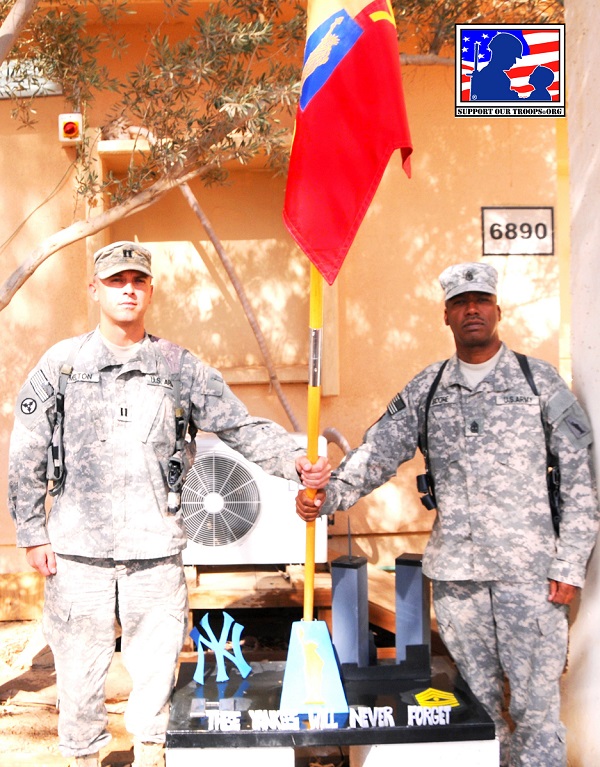
The events of 9/11, like Pearl Harbor before it, began a global military and political realignment. As one would expect, it started out adhering to the long-standing global structural perceptions, misperceptions, and practices. The Abraham Accords achieved in President Trump’s first term began a fundamental shift from the old ways in the Middle East, which America’s adversaries traditionally used to breed trouble at the expense of the locals.
But God did not put us here to be perpetually miserable. As in Eden, He intended happiness and prosperity for His creations. And believing in this, the fresh, new thinking brought in last year by the new Trump Administration has in but a few short months brought us post-9/11 to an entirely new global configuration, pursuing prosperity and aligned along common sense interests of the countries involved as opposed to ancient ethnic grievances, division and geopolitical manipulation by the known bad actors. Masks are coming off, and the wearers recognized for what they are, making choices and dealings clearer and simpler for the others, because they can base them on true, not fake, motivations and objectives. In short, a long-standing morass of deceit and manipulation is quickly being set right.
And through all of this, your troops have done their part keeping everyone at home safe. When requested they now even patrol the streets at home to help take out the garbage. And they rapidly deploy all over the world to deter or suppress small brushfires before they grow into huge wildfires.
- Details
- Hits: 8757
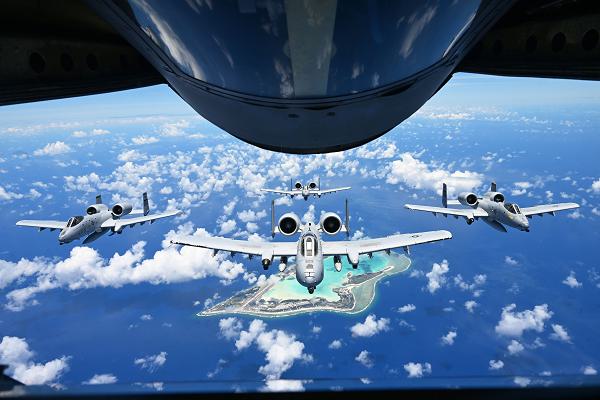
Wake Island. South Pacific. In this photo by Air Force Senior Airman Audree Campbell, A-10 Thunderbolt II aircraft fly in formation over Wake Island, a tiny island with an extremely dark past. During World War II, Wake was the scene of some of the worst atrocities committed by Japanese troops against innocent civilians and POWs.
Wake Island is a coral atoll in the Pacific Ocean located 2,300 miles west of Honolulu and 1,500 miles northeast of Guam. Originally part of Micronesia, the atoll is currently under the administration of the American Department of the Interior. The island is shaped like a crescent with a 4.5-mile reef surrounding a deep-water lagoon. For years prior to the war, Wake was a lonely outpost used mostly by Pan American Airlines as a transit stop for long flights over the Pacific.
The Japanese conducted two amphibious assaults, one on 11 December 1941 (which was rebuffed) and another on 23 December, which led to the Japanese capture of the atoll. As they did elsewhere in the Pacific, the Japanese used the 98 POWs for slave labor and subjected them to inhuman conditions. Many prisoners were placed on a "hell ship" to be transported to a prison in Japan occupied China. Encouraged by the ship’s captain, the POWs were given too little food and water in unsanitary conditions in the ship's holds, and they were systematically beaten and tormented. Five were executed during the voyage.


